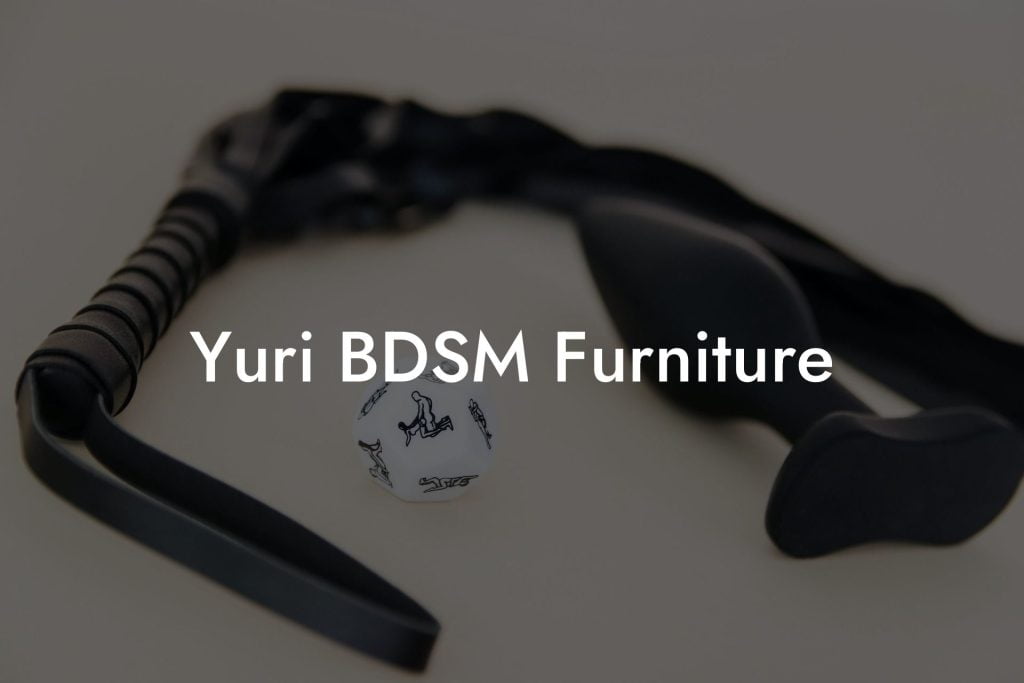Are you curious about the world of BDSM furniture and how it can add a new level of excitement to your kinky play? Then look no further! In this detailed article, we'll introduce you to the concept of "human" furniture, how to create it, and how to use it in your BDSM scenes for an unforgettable experience!
Oh and... If you're looking for something different, check out the BDSM furniture created by Sensory London. The restore antiques and turn them into beautiful BDSM furniture masterpieces.BDSM "Human" Furniture Table of Contents
What is "Human" Furniture?
In the context of BDSM, "human" furniture, also known as forniphilia, refers to a person taking the role of a piece of furniture and being incorporated into a scene. This type of play can range from the simple act of a submissive serving as a footstool for their dominant partner to more complex arrangements and modifications to make the human more furniture-like.
Why Incorporate Human Furniture into Your Play?
- Sensory Deprivation - When a person becomes furniture, they may be blindfolded, gagged, or have their hearing restricted, which heightens their other senses and adds an element of anticipation.
- Power Exchange - Serving as a piece of furniture is a form of submission, reinforcing the power dynamic between dominant and submissive partners.
- Objectification - The submissive becomes an object for the dominant partner's use and enjoyment, creating a unique psychological experience.
- Creative Expression - Designing and creating furniture from a partner's body can showcase one's artistic talents and ingenuity.
Types of Human Furniture
There is a wide range of human furniture possibilities, limited only by one's imagination. Some common types include:
Footstools and Chairs
A submissive may be used as a footstool by kneeling on the floor with their hands and head down, providing a place for the dominant's feet. Alternatively, they may be positioned as a chair, with the dominant sitting on their back or thighs. These roles can be made more comfortable with the use of cushions and padding.
Tables
A submissive can be transformed into a table by lying on their back with their limbs held out as table legs. They may be used to hold drinks, snacks, or other objects during a scene. Temporary-style tables can be created through the use of slings, chains, or ropes.
Art Displays
The submissive can act as an exhibit for the exclusive pleasure of the dominant, displaying various artistic objects or outfits, or being adorned with temporary tattoos, body paint, or soothing wax.
Safety Considerations
Safety should always be a top concern when incorporating human furniture into your play. Keep these considerations in mind:
- Time Limits - Restrict the time spent in furniture poses to prevent injury, fatigue, or discomfort. Regularly check in with your partner to ensure they are still comfortable and able to continue.
- Communication - Establish a safeword or gesture beforehand to allow the submissive to alert the dominant if they need to stop or adjust their position.
- Physical Limits - Ensure the submissive is aware of their own physical limitations and can maintain the chosen position without long-term harm or discomfort.
BDSM "Human" Furniture Example:
An Example Scene
In this scene, a dominant and submissive couple have decided to incorporate human furniture into their play. They have set up a comfortable space and agreed upon safewords, gestures, and time limits. The dominant partner finds an appropriate pose for the submissive, using props and supports where necessary. The submissive is then blindfolded and gagged, heightening their senses. The dominant partner enjoys the scene, incorporating the human furniture into their play while frequently checking in with the submissive to ensure their comfort and safety. After the scene, the couple engages in aftercare to maintain trust and emotional connection.
Now you've learned about the exciting world of "human" furniture in BDSM play. Are you ready to experiment with this unique aspect of power exchange and objectification in your own scenes? Remember to communicate openly with your partner, keeping safety always in mind. We hope this article has broadened your horizons and provided ideas for incorporating human furniture into your kink dynamics. Be sure to share this article with your friends, explore more intriguing guides available on Filthy Adult, and dive into our fetish shop for all the tools you'll need to create your next unforgettable scene!













